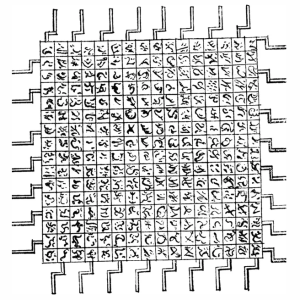“Earth’s Magnetic Field”

Photo from www.nasa.gov Schematic illustration of the invisible magnetic field lines generated by the Earth, represented as a dipole magnet field.
By Scott Hamilton
Did you ever wonder how a magnetic compass works? I guess first you might need to know what a magnetic compass is, because everyone these days depends entirely on GPS technology for navigation. A magnetic compass is an older navigation technology which utilizes a magnetized needle to find the Earth’s North pole. These raised questions for many years, as the compass seemed like magic before we began to study magnetism and electromagnetic energy. The compass was kind of an accidental discovery as people realized that certain materials were magnetic and saw how they interacted with each other. It was discovered that a magnet suspended and allowed to move freely always oriented itself in a north to south direction. This is where the poles of a magnet get their names; every magnet has a north and south pole.
So why does a magnet align itself north to south? It has to do with the fact that any two magnets brought near each other will want to align with their poles, facing in the same direction. I suggest you grab a couple of bar magnets and play around with them for a little while; they will only stick together in a couple of different ways. One is with their opposite poles touching at the end, the other is when the same poles are in the same direction – you can stick the magnets together along the sides. If you attempt to face their poles in opposite directions, the magnets will push against each other and refuse to be connected.
So what does the behavior of a magnet have to do with a compass always pointing north? It means that the earth itself is a giant magnet. It has a magnetic field, just like the bar magnets that point north to south, and the compass needle is a tiny bar magnet that wants to align with the big magnet that is Earth. We are still working to understand the cause of the magnetic field around the Earth, but what we do know is that this field is critical for life on Earth.
The sun and other stars in the galaxy emit radiation that is deadly to all known life-forms; ironically it also emits radiation that is required for life. Earth’s magnetic field acts like a gigantic filter that blocks the dangerous solar and cosmic radiation, but allows the helpful radiation through to the Earth’s surface. If we did not have this magnetic filter, the radiation would bombard the Earth, evaporate our atmosphere, and turn our planet into a barren wasteland. We know this from studying other planets in our solar system that have weaker or no magnetic fields at all. Mars is one such planet. In fact there are a few criteria we use when evaluating a planet for the ability to sustain life. One is the distance from its sun; the second is the existence of an atmosphere; the third is the presence of liquid water; and the fourth is the existence of a magnetic field.
Recently we have begun to study the strength and shape of this magnetic shield through exciting the ionosphere with electromagnetic radiation. We just happen to have learned that the frequency of radiation that has the most impact on the ionosphere just happens to match that of 5G wireless signals. We have learned a lot in the last decade about Earth’s magnetic field, but one of the most critical things we learned is that this field is decaying. Just like a magnet can get weaker when exposed to heat within a changing magnetic field. This means we are slowly approaching a point where Earth may no longer support life. Don’t worry, it will be millions of years still, but the scary part is that it is decaying faster than scientists expected.
So why is this unexpectedly more rapid? There are two possible reasons and I tend to lean towards the first. The first explanation is that the Earth is not millions of years old as scientists believe but it is much younger. This would mean that the decay they are measuring, thinking it has taken millions of years to decay in the past, really only took a few thousand years, which means that the decay rate is actually the same or possibly even slower than it was in the past. The second reason would be that we are having a negative impact on the magnetic field through our use of radio signals, weakening the very thing that protects life on Earth.
Honestly there may be a little of both involved, but for me the easiest explanation is that we have the age of the Earth completely wrong. We have measured a rapid decay in Earth’s magnetic field, and if we run those numbers backwards we find that there is no possible way the planet maintained a magnetic field for millions of years, much less the billions of years secular science believes. Notice that I used the word believes there, because regardless of which view you have, they are both beliefs as there is no proof for either young or old Earth views. However, studies like the one of Earth’s magnetic field decay certainly provide much evidence for a young Earth.
Studies since the 19th century have shown a steady decay of the Earth’s magnetic field of about 5 percent per century, which as we start reversing that and predicting the strength of the field in the past based on a constant decay rate, within just a few thousand years the field is exponentially stronger. Going back ten-thousand years, the intensity is so strong the planet could not support life, and if we go back millions of years the heat generated by the magnetic field would melt the planet. This either means the decay has rapidly accelerated in recent years, or the planet is much younger than science believes. I leave the choice up to you. Until next week, stay safe and learn something new.
Scott Hamilton is an Expert in Emerging Technologies at ATOS and can be reached with questions and comments via email to shamilton@techshepherd.org or through his website at https://www.techshepherd.org.






